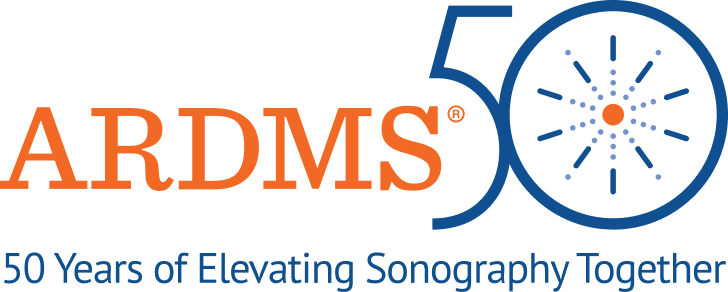By: Gregory Hobbs
I can remember my ultrasound program and the first time I was allowed to scan. I thought that the transducer did all the work, was I wrong! As a student, there are many new things we must learn in sonography. Starting with knobology, how the machine does what it does, and the physics behind it all. How many times have we all had the probe in the wrong direction and never realized it until we were corrected by the teacher? We have all been there as a student and know the struggles. So much information all at once, but we made it through when we never truly could see the end. In my current role, I have the honor of teaching students ultrasound as a program director at a local school in south Texas. Like most educators, I get to witness firsthand students starting much like we did, but in the end realizing that they have greatly improved. Thinking about this, I wanted to create a way for the students to see this for themselves, I want them to witness the transformation from student to sonographer. Therefore, I have incorporated reflection to showcase their sonographic journeys through digital technology!
Reflection is such a powerful tool that goes unrecognized and unutilized. Reflection gives my students the ability to take a step back and look at each of their required ultrasound competency scans. Currently, we utilize Microsoft PowerPoint, allowing the student to turn in their lab competencies to receive personalized video feedback. Once the student is provided with the feedback, they are required to publish their scan on a personalized electronic portfolio known as an ePortfolio. These are very simple to set up. Students utilize google sites to showcase their exams. Google sites are free for anyone to use and very user-friendly. These sites are made public for students, instructors, and community sonographers to view. Students knowing this want to display the best images possibly. I have had many students recognize on their own with zero feedback from staff what areas they need to improve within their scans. They reflect on their scans and self-criticism. Most of the time students are not happy with their first submission and will elect to redo the entire study to obtain something they are more comfortable with showcasing. EPortfolios and public publishing of scans allow for the students to reflect and ensure they are giving it their very best to showcase to the ultrasound world their ability to perform at a higher level, exactly as a sonographer would do for any patient’s ultrasound exam.
In ultrasound, we often don’t take a moment to step back and reflect on how we scanned. We assume that as sonographers we know what we are doing, but don’t take the time to truly evaluate our images. Therefore, I believe that self-reflection for students that will go on to graduating should provide this new outlook to do so. Reflecting and learning from your minor mistakes will only improve your scanning and knowledge. In turn, it will also help you produce the best possible scans for your patients in the clinical setting. I hope that other programs will begin to incorporate self-reflection into their sonography programs and change the generation of sonographers that will be out in the field soon. One hospital that practices locally established a day a week where they meet and review cases and how the team could improve, another form of reflection. Many educational tools help with reflection, and one that I think needs to be shared is Flipgrid. This is free software that is used to empower students’ voices. It’s a simple application that allows students to record responses and utilize many different features to truly customize their experience. It’s awesome to hear the student responses to learning and growing in this modality. Students recognize the growth because they can see the change in their images and rewatch the videos they create using Flipgrid, another amazing way to have the opportunity to reflect.
Much like my students I wanted to share my voice and ideas with those sonographer educators out there. We have a huge responsibility for developing sonographers and I know, like all of you, we take great pride in doing so. It’s an amazing experience to be able to see the students never have an idea of what a transducer is to create beautiful images as they graduate and become credentialed to work out there in our communities. I encourage everyone to take the time to look back and reflect on their journey and see how far they have come. More importantly, utilize reflection to improve yourself and the patients that depend on us. Reflection and the utilization of digital technology into my ultrasound program have done just that, for my future sonographers and I encourage you to do the same for yourself and yours.
Example of student ePortfolio- https://sites.google.com/view/brandyramos/about-me
References
- Disruptive Innovation in Education. Gregory Hobbs B.A.Tech, RDMS, RVT. (2021, January 22). Retrieved October 22, 2021, from https://sonographercoach.com/disruptive-innovation-in-education/.
- Google. (n.d.). How to use google sites – sites help. Google. Retrieved October 22, 2021, from https://support.google.com/sites/answer/6372878?hl=en.
- Learn together. Flipgrid. (n.d.). Retrieved October 22, 2021, from https://info.flipgrid.com/
- Ramos, B. (n.d.). Brandy Ramos. Retrieved October 22, 2021, from https://sites.google.com/view/brandyramos/about-me
About the Author
Gregory Hobbs is the Diagnostic Medical Sonography Program Director at The College of Health Care Professions
The content, information, opinions, and viewpoints expressed in this article are those of the author. ARDMS makes no warranty, expressed or implied, as to the completeness or accuracy of the content contained in this article and ARDMS shall not be responsible for any errors, omissions, inaccuracies in these materials, or the quality or reliability of any services or products referenced to, whether arising through negligence, oversight, or otherwise. ARDMS cannot be held responsible for your use of the information contained in this article.
